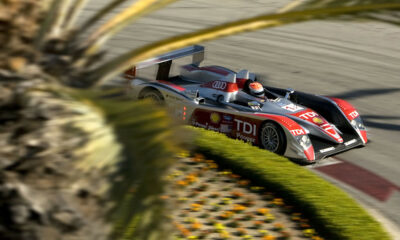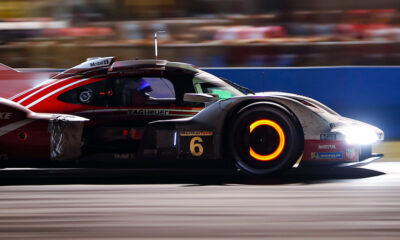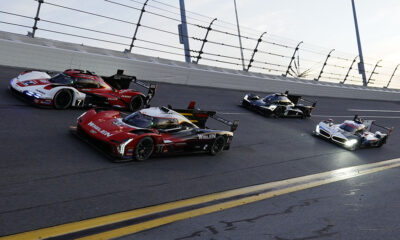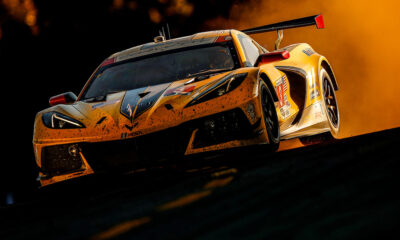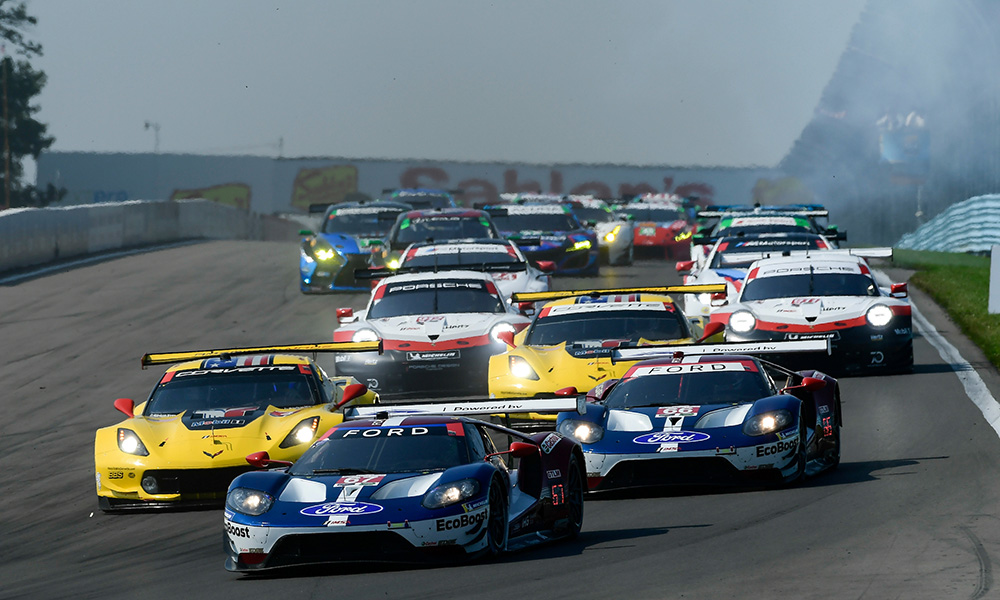
Photo: Michelin
The IMSA schedule generally follows a consistent routine. The season opens with five race weekends in 19 weeks.
This includes the two longest races of the year with the “36 Hours of Florida” in Daytona and Sebring to open the Michelin Endurance Cup, the two shortest races of the year where IMSA teams tackle city streets of Long Beach and Detroit, and the first standard-length two-hour, 40-minute race at Mid-Ohio.
The Le Mans break allows for those teams and drivers participating in the French endurance classic in mid-June, followed by the summer string of races after Le Mans. From the last weekend in June to the last weekend of August there are five races in nine weeks.
This stretch includes the third Michelin Endurance Cup race at Watkins Glen International, a six-hour race, followed by four consecutive two-hour, 40-minute races including two GT-only showcase events at Lime Rock Park and VIRginia International Raceway.
The summer swing brings the IMSA MICHELIN Pilot Challenge and Prototype Challenge championship battles into focus with a flurry of racing activity after intermittent races in the first half of the year.
After a one-by-one approach at each of the first five race weekends, Michelin now plans for five weekends at once as the calendar clicks into June.
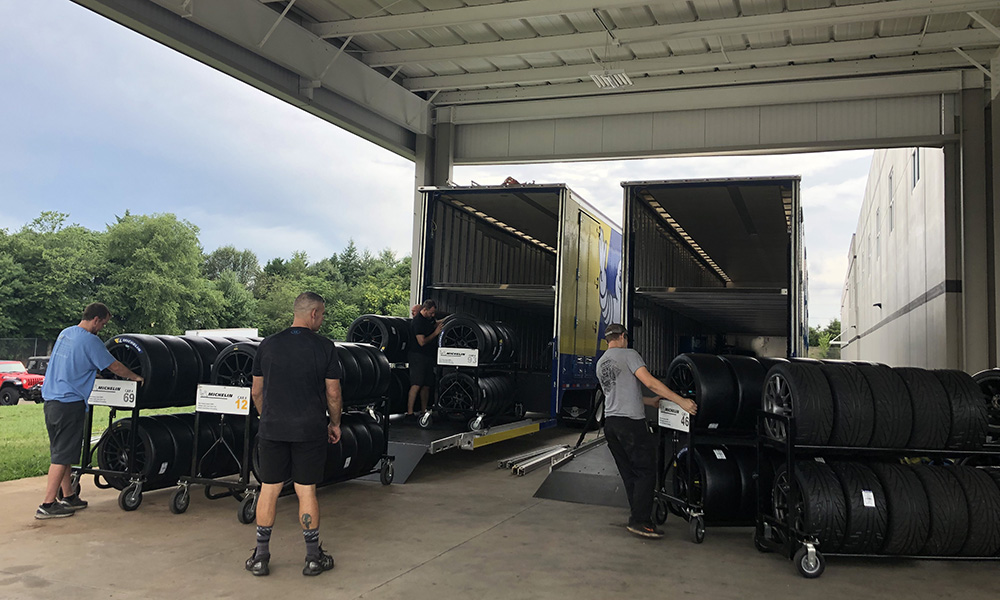
Photo: Michelin
Preparing for the Back-to-Back and Beyond
In the next five race weekends, Michelin will support a total of 12 races and 33 hours and 25 minutes of racing across three IMSA series. This includes five WeatherTech SportsCar Championship, five MICHELIN Pilot Challenge and two IMSA Prototype Challenge races.
There will be 14 tire trailers departing from Greenville, S.C. before Watkins Glen, and roughly 5,000 tires per weekend for each of the next two race weekends alone.
Given the volume of tires needed for each event across at least two or occasionally three series, and the short lead time in-between each race, the need for detailed preparation becomes clearer.
“There’s a lot of front-end logistics to get ready, particularly for The Glen and CTMP,” says Ken Payne, technical director, motorsport, Michelin North America.
“The trucks leave South Carolina a week before Watkins Glen and then don’t come back until after Lime Rock. There’s essentially no time in-between. We need to have everything planned in advance in terms of equipment and tires loaded up so when everything heads north that we are ready to do back to back events.
“Logistics are set up so that used tires will come back from Canada, but some of the hardware will stay up north because it’s only a couple weeks later until Lime Rock. We have some freight haulers moving back and forth bringing scrap tires back to Greenville and taking new tires back to Lime Rock. Equipment wise, a lot of things stay in the Northeast to save logistics costs.”
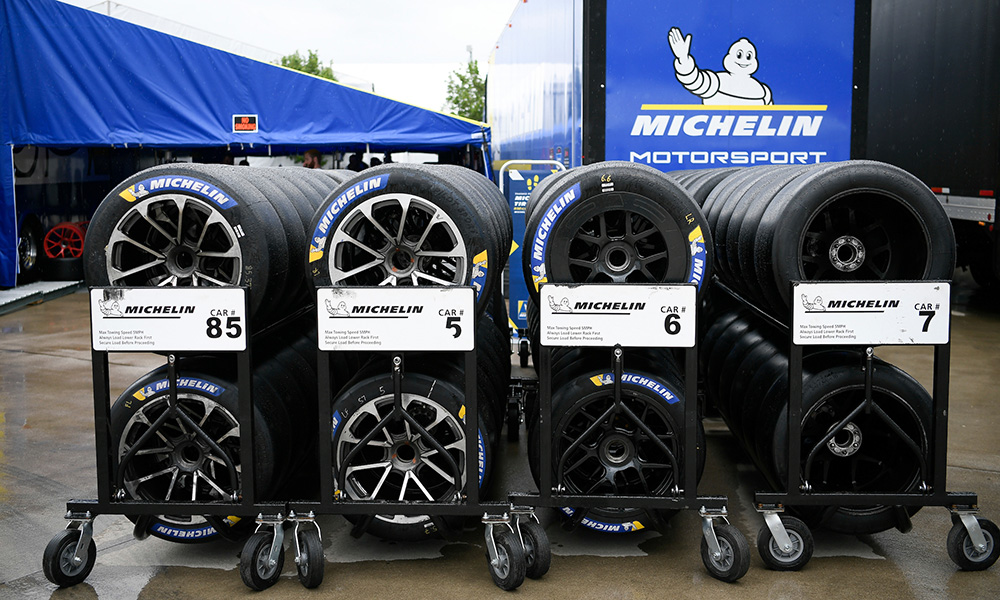
Photo: Michelin
Taking it to the Track
The Michelin technical team meets with the IMSA technical and competition directors far in advance of each event to designate the S8 (medium) or S9 (hard) specification and allocation for the GT Daytona, MICHELIN Pilot Challenge and Prototype Challenge classes. GT Le Mans teams each place their respective orders for the combinations of their bespoke soft, medium or hard compound options for each race.
Starting at Watkins Glen, the DPi and LMP2 classes will run the IMSA Hard tire, and the GTD and GS classes will run on the MICHELIN® Pilot® Sport GT S9M hard specification commercial tire. The TCR class remains on the same S9 compound they have all season.
An additional complication was adding the supply and management of tire pit carts for full season WeatherTech and MICHELIN Pilot Challenge entries that chose to participate in this program.
To facilitate the service, Michelin and its operational and logistical partner Jackson Motorsports Group have acquired tire carts, which are designed to carry three sets of mounted tires per car, and have installed a tire mounting and balancing line there.
Once new tires are mounted and balanced, they are loaded onto the carts. The carts require a lift gate and upper floor in the trailers, so Michelin now utilizes special deep belly trailers with lift gates to accommodate the tire carts.
Trailers with tire carts carry approximately 330-350 tires, compared to the 600-625 unmounted tires in a traditional trailer. This requires additional transporters and drivers.
After loading, the fleet of transporters, tire supply trailers and three technical support transporters depart Greenville in waves to arrive at the circuit a defined number of days prior to the first on track activities. As Payne noted, some trucks will not be back to Greenville until after Lime Rock the weekend of July 19-20.
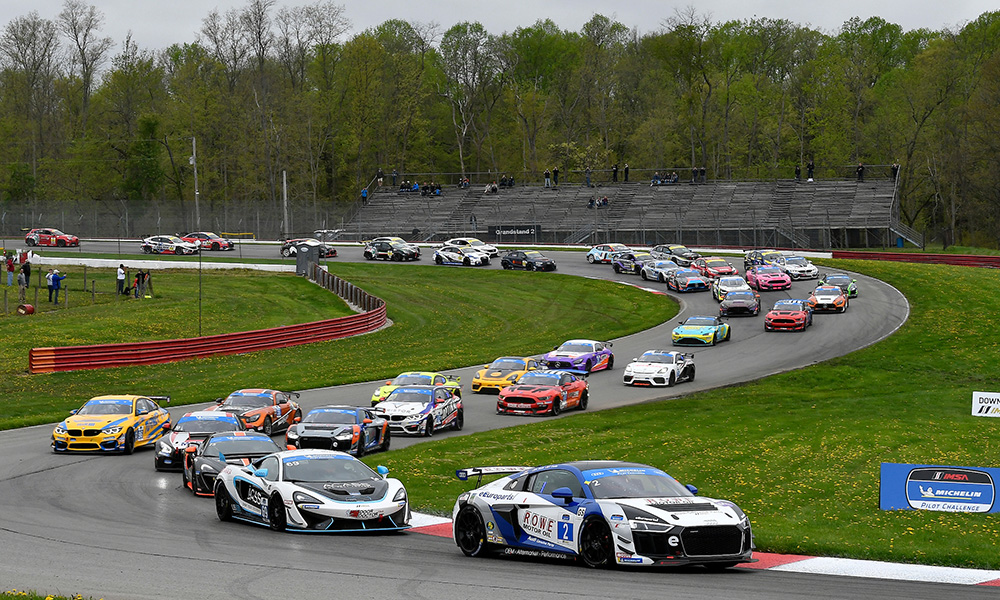
Photo: Michelin
Challenge Series’ Seasons Get Going
Each of the IMSA MICHELIN Pilot Challenge and IMSA Prototype Challenge series have raced three times through the end of May.
MICHELIN Pilot Challenge competitors have seven races remaining, while Prototype Challenge is already at the halfway point of its season.
Both series still have one more endurance race left on their schedule before they finish with their standard length races. The Pilot Challenge runs a four-hour race at Watkins Glen, and the Prototype Challenge holds a three-hour race at CTMP. Interestingly, the Prototype Challenge race at CTMP is longer than Sunday’s WeatherTech Championship race by 20 minutes.
Payne reflected on how the Challenge series teams have been to work with thus far.
“The MICHELIN Pilot Challenge series’ GS and TCR classes present a completely new group of people and a huge variety of cars and quite a range of tire sizes,” Payne says.
“For us, that’s the biggest variety of cars and fitments, as well as experience with the teams. It’s been a tremendous learning opportunity for us to optimize the tires for the tracks and the cars as we go through year one.
“In TCR, everyone is on the same tires all season and the cars are relatively similar. They’re all front-wheel drive with similar weight, power. Most TCR cars are multi-stinting the rear tires. They’re learning things like hot pressure targets with those things.”
An early highlight of the TCR season was an intense battle for the win between Hyundai and Audi at the Mid-Ohio Sports Car Course, with slicks on a damp track. Payne notes the class is still poised for growth throughout 2019.
“I expect that class will continue to grow,” Payne says. “The cars appear great to drive. Looking at combined front and rear usage, they’re hard on fronts, but extremely easy on rears. That’s been pretty good. It’s proven to be highly competitive racing.”
Prototype Challenge has also delivered three consistent races so far.
“The LMP3 crowd has been great to work with,” Payne adds about the LMP3 field. “It’s an extremely enthusiastic group. Like TCR, they’ll run the same tires all season. A fair number of teams have done private testing on our tires. The learning curve is such that they’ve been able to gain knowledge and learn about them. The bang for the buck in that series is tremendous, for relatively modest cost.”
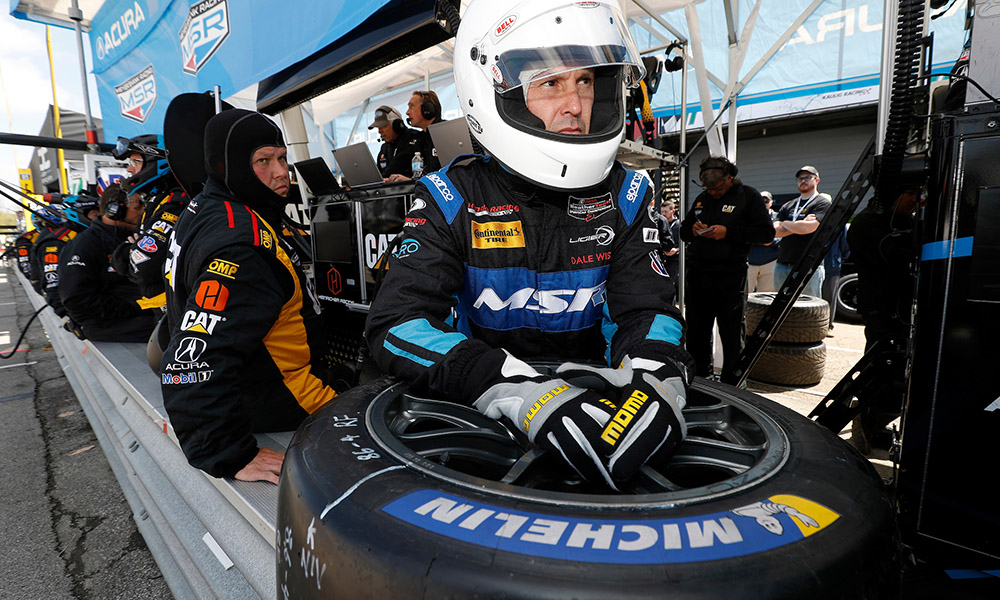
Photo: Mike Levitt/IMSA
Continued Learning in the Second Half
Payne notes there are still many learning opportunities for Michelin to discover in the second half of 2019.
“We still have a lot of things to learn from different manufacturers, cars, and individual teams,” Payne summarizes.
“But we’re on track. It’s a challenge to find the time to engage in detail with every team in the paddock every event. But it’s a work in progress.”




















